
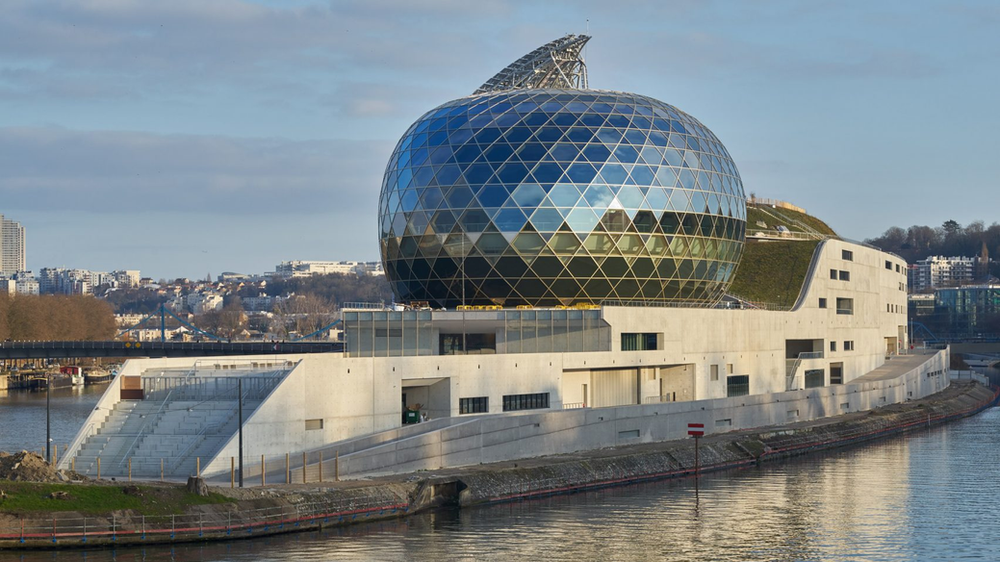
Above, a recent architectural feat that incorporates artistry alongside solar energy. ,La Seine Musicale, a new music complex in Paris, features a wall of moving solar panels. Building integrated photovoltaics (or BIPV) have gained a lot of traction with the advancement of solar technology and its applications. Similarly, Sistine’s mission is to bring beautiful aesthetics to solar panels, which typically lack the visuals of what many would assume of ‘architectural solar.’ SolarSkin’s versatility, universal compatibility with existing modules, and seamless installation puts it in the midst of the growth of artful, architectural solar. Here is our list of why you should consider SolarSkin as a crucial component of the innovative architectural projects of the future.
Building energy savings are now too pressing to ignore
As commercial buildings consume ,40% of the world’s energy, the pressure for companies to get their properties LEED certified is growing. LEED, or Leadership in Energy and Environmental Design, is a rating system by which buildings can be judged for their environmental impact. It also helps designers and contractors consider how a building can be sustainably healthy, efficient, and cost-effective. Many ,large corporations are receiving attention in the news for their certifications, which typically involves the installation of solar cells on site, charging stations, use of particular building materials, reduced water flow, well insulated exterior walls, LED lighting, and more. This, alongside the ways in which it will be encouraged to incorporate solar in buildings, bodes well for the application of architectural solar.
Similarly, a recent SolarSkin installation in Minneapolis advanced the future of architectural solar. The Ackerberg Group, an esteemed commercial real estate developer, dreamed of solar panels powering their LEED Gold certified building. They, like many of our clients, hoped there was a way aesthetics wouldn’t be abandoned, and envisioned the solar array to be “anything but traditional”.
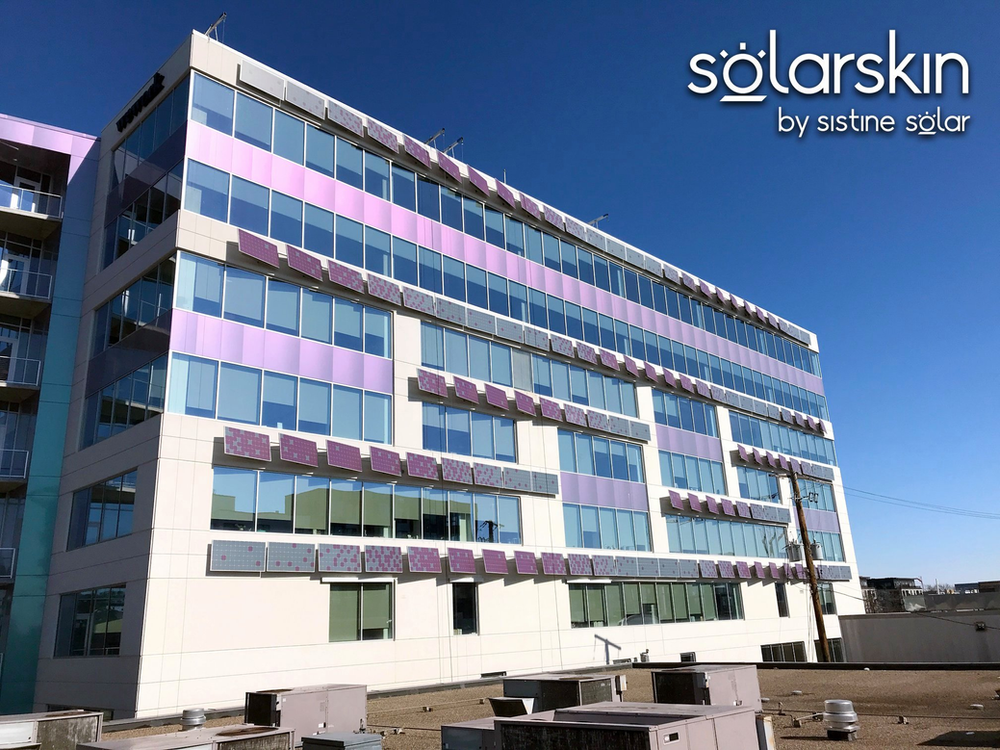
Throughout the design process, we wanted to transform the panels in a way that would pay homage to both Ackerberg’s brand colors and the color shifting attributes of the building’s facade. The final installation involved 24 distinct SolarSkins with varying amounts of purple and grayish blue. By thoughtfully dispersing and repeating the patterns across the building surface, the panels were transformed to exhibit a constantly flowing gradation of hues that accentuates the dichroism of the facade. The effect was further amplified by the project’s novel use of custom brackets that allowed the panels to be offset from the facade at varying angles.
Increasing amount of legislation addressing solar
In recent years, legislation that advocates for the growth of solar has become more and more common. The ,California Mandate was one of the leading pieces of legislation in the US that calls for a more extensive implementation of solar. It requires all new buildings up to three stories to be equipped with solar panels, and though the regulations have since been watered down due to COVID-19, such efforts demonstrate the changing landscape of renewable energy in the US. All the more promising is current proposals of ,residential solar mandates in 10 states.
Additionally, proposals are being made towards green roof initiatives in order to meet the energy demands of urban areas. ,San Francisco led the movement towards precedents being set for green roof construction, with cities like Denver and Portland following, among others.
Outside the US, ,France has been pushing for green roof infrastructure to become commonplace for commercial buildings. It follows a similar ,bylaw set in place in Toronto in 2009, which was the first major city to require and govern the construction of green roofs. Soon, solar is going to be a part of most people’s everyday lives, and SolarSkin provides the means for this clean energy to be adopted by the masses.
An example of SolarSkin in the commercial world — Starwoods’ Element Hotel in Dallas, Texas used SolarSkin to cover a canopy, which guests could sit under and also charge their phones via USB, all powered by the sun. The design of this SolarSkin is emblematic of nature, offering a place for guests to relax, converse, and enjoy their stay. By implementing such projects, Element was able to show its commitment to sustainability, boost the guests' experience, and demonstrate one of the many applications solar is capable of with the addition of SolarSkin.
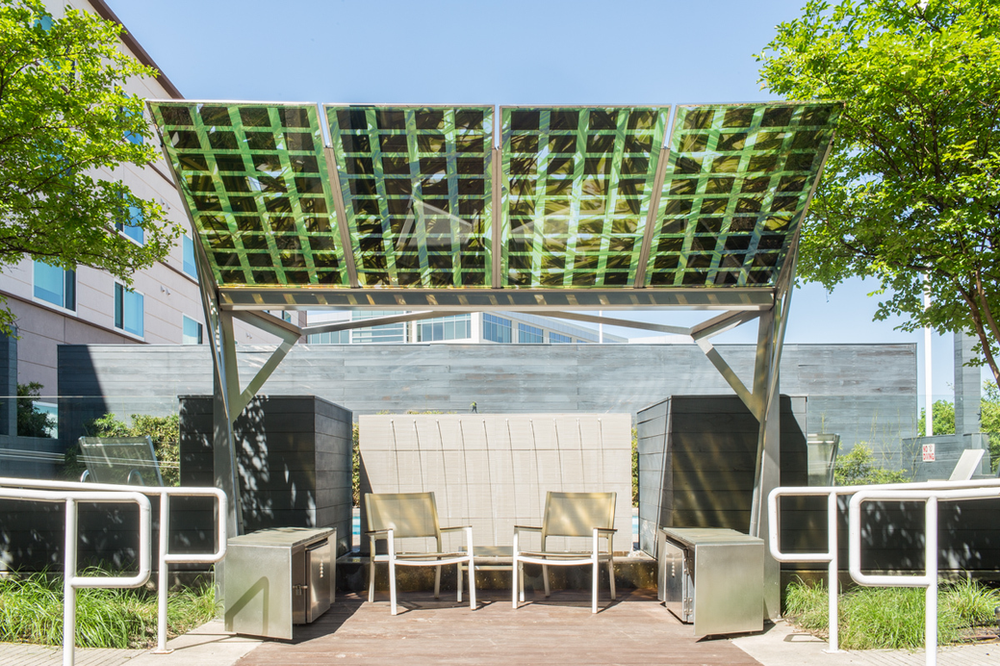
As legislation for green roofs inevitably increases, SolarSkin offers companies the chance to gain a plethora of benefits, alongside making their buildings more green. Solar canopies can easily be adopted to green roof infrastructure, and further demonstrates the versatility of architectural SolarSkin powered modules.
SolarSkin preserves the broader historic and architectural value of buildings
SolarSkin eliminates many of the barriers that face our commercial clients, and this becomes even more prevalent in historic districts. For Lucia Stanslaw, owner of Lucy and the Green Wolf in South Dakota, she was inspired by businesses who had installed solar awnings, and wanted to show a similar commitment to sustainability in her community. But a historic preservation ordinance required her to consider solar in a way that would better blend into the existing design of the building. With some research, she found SolarSkin, and soon after had beautiful panels mounted on the front of her store. Since ,the installation made its debut in 2019, she has received attention from locals and tourists alike.
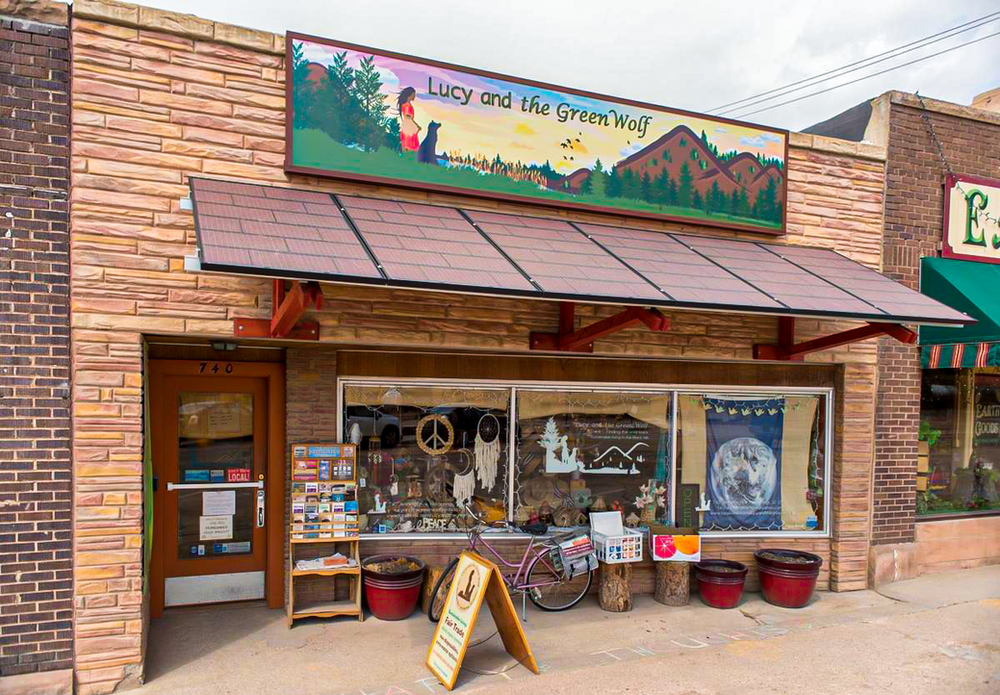
With SolarSkin, Lucia was able to reduce her impact and maintain the historic attributes of her community. Her success shows a bright future for architectural solar — which is now open to all new possibilities.
SolarSkin allows public art to flourish
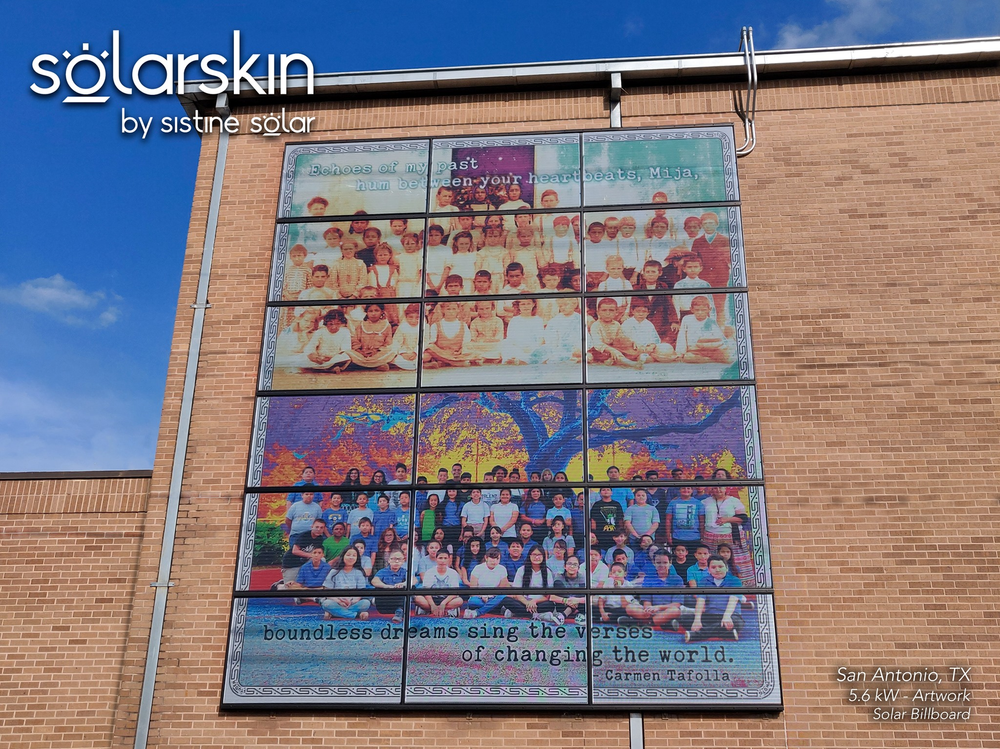
Above, a SolarSkin mural in San Antonio, Texas. It depicts two classes from a local elementary school — from 1907 and 2018 — and ,will bring renewable energy to the community for 30 years. Its installation signifies an important piece of the future of solar — historic and architectural preservation. The students from 2018 were able to involve themselves in the mural’s placement and content. Like Lucia’s story above, these solar projects have the opportunity to directly interact with members of a particular neighborhood.
Likewise, the possibilities can be easily tied into many art initiatives of major cities. In New York, the ,Percent for Art Program brings local artists into the design process of city-owned buildings, meant to enliven the community’s involvement in developing civic and community buildings. A project like the SolarSkin mural in Texas is the perfect example of what projects could be eligible in equivalent programs of different cities. Many cities have the opportunity to enrich their landscapes by supporting clean energy and local artists, all in one.
How does SolarSkin benefit architects?
In short, SolarSkin is the way in which innovative projects of the future can reach the masses. For architects, they can be excited about design versatility — SolarSkin makes solar a canvas for you to create any design — and solar becomes an organic and seamless addition to the larger artistic vision of your project. There is no need to worry about how incorporating solar power may detract from the visual of your building’s design. SolarSkin is a well tested, state of the art, and cutting edge aesthetic technology unlike anything else.
On the whole, architectural solar is no longer an unrealistic venture for any project or designer.
To see what SolarSkin can do for you, step ,here.


